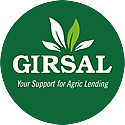Financial institutions are often averse to financing the agricultural sector due to perceived high risks of agriculture activities and insufficient ready information.
After many dialogues and consultations with the various stakeholders of GIRSAL, a platform that can host different agricultural financing information for financial institutions to learn and access information to guide their loan assessment was required. Therefore, leading to the development of the GIRSAL Agriculture and Agribusiness Knowledge portal to assist the staff of financial institutions in bridging the knowledge gap.
GIRSAL, with support from AGRA, launched the GIRSAL Agriculture and Agribusiness Knowledge portal in October 2020 at the National Banking College. The knowledge portal is developed to bring relevant agribusiness content into a single interface from different sources. It helpfully presents the information to support Agric-related information needs of financial institutions.
The portal forms a core part of GIRSAL’s Technical Assistance (TA) strategy for financial institutions lending to agriculture. It complements GIRSAL’s agribusiness financing training, coaching, mentoring, and other technical assistance programs.
It is expected that the introduction of the knowledge portal will reduce the rejection rate of agriculture loans and processing time due to the availability of information.
As of June 2021, over 295 staff from 16 partner financial Institutions have been on-boarded onto the knowledge portal, with 2,950 visits recorded since November 2020.
The content on the portal features twenty-six (26) commodity-specific information packs within crops, livestock, poultry, and aquaculture that addresses critical issues produced by a qualified and professionally experienced team of consultants.
The commodity packs include Value chain profiles, key risks identified at each value chain point and mitigation measures, production calendar, growing season, and cropping cycles. It also has key agricultural practices at each step of the production process, pest and disease prevention and management techniques, market information, price trends and others.
